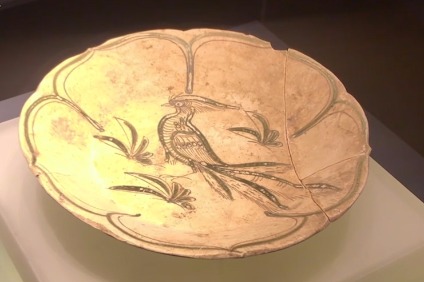Jinjing; the rebirth of a Hunanese tea town
By Richard Whiddington and Dai Rongzhu
Updated: 2016-10-18
When the spring rain falls over the lush tea gardens of Jinjing in Hunan province, the picturesque scene gears up to deliver another high quality harvest. The region's fertile soil, stable rainfall and clean air have long provided an ideal climate for tea cultivation. A visit to Jinjing in the months of March and April is to witness a mass of activity as producers work frenetically to dispatch high-quality green tea to China and the world.
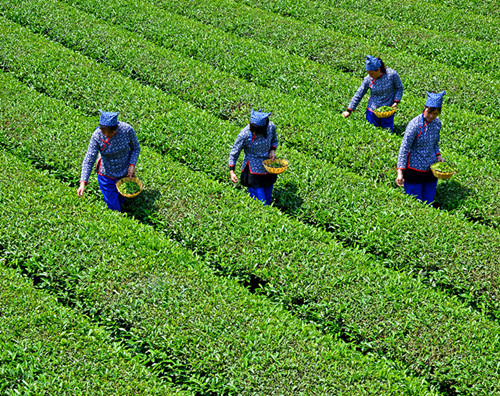 |
| Tea pickers work their way through Jinjing's lush tea fields. [Photo/jjz.csx.cn] |
However, business hasn't always flourished so readily in this well-known region. Throughout the 1990s Jinjing Hunan Tea Co lay in the grip of a distribution crisis. The company failed to react to the changes imposed by entry into a market economy and remained reliant on a management structure and personnel out of touch with a rapidly modernizing industry.
Local laborers would pick the leaves, transport them to the factory, process them using traditional withering and rolling techniques, package them, and then set box upon box of the dried plant on shelves where they sat unsold.
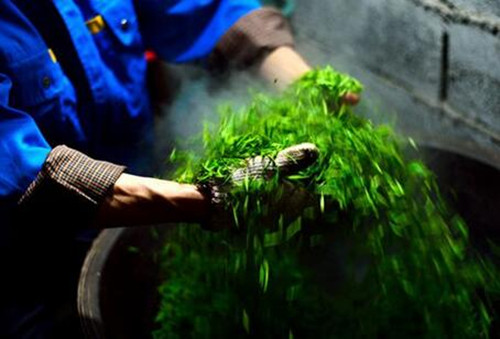 |
|
A worker demonstrates traditional green tea making techniques in Jinjing town in May this year. [Photo/ Hunan Daily] |
In essence, the well-oiled production chain that had transformed the Hunanese company into a nationally recognized brand in the 80s continued its agricultural output in the face of a customer base that dried up.
Jinjing's survival into the 20th century seemed increasingly unlikely and one anecdote that poignantly exemplifies the company's fear of bankruptcy is that of Zhou Yu, the former general manager, stuffing the truck of his car with bags of green tea in the hope of selling the goods to strangers.
Fast forward twenty years and this same company, at one time unable to afford its workers' welfare, is thriving and recently became Changsha county's first time-honored brand. This award follows its selection in May as a Hunan Provincial Intangible Cultural Heritage.
This rejuvenation was achieved through hard work, strategic planning, and supportive local government policies. One difficulty faced by businesses across the industry was transitioning from a collective ownership model to becoming joint-stock enterprises. Gradually the tea companies acclimatized to the pressures of operating within a world market and in due time the popularity of its product returned.
In 2015 the region's sales reached an impressive 385 million yuan ($57.54 million) and in hindsight the resurgence of Jinjing green tea seems inevitable. For many, the notion that the region of Jinjing could stop green tea production is laughable. After all, the region is steeped in a rich tradition of tea cultivation dating back to the Han Dynasty (206 BC-AD 24). Local families have passed on tea secrets for countless generations and the region reached a zenith of recognition during the Ming Dynasty (1368-1644) when its specialty product was used as imperial tribute.
With the past as a bitter memory, local authorities continue to innovate and drive the industry onwards. Tea might seem like a blissful afternoon beverage but the industry itself is fiercely competitive and is constantly changing.
In the past five years, Zhou Changshu, the company chairman, has pioneered a successful export plan that has significantly raised Jinjing's profile.
"This year we increased our yields," Zhou boasts, "we will take the opportunity to greatly expand our tea exports."
The company sells predominantly to ASEAN countries, with 20-30 percent growth figures estimated in the coming years.
This change of business model can be illustrated by the story of Zhou's investigation into Malaysia's green tea import industry. He discovered that Green tea worth 200 yuan per kilogram in China was being sold for over three times that in Malaysia. He entered the market chain selling at a competitive 400 yuan and the company now holds Malaysia as an important export center.
This type of proactive business activity has placed Jinjing in a strong position to expand its operations into Europe, Japan, and the United States in the future.
Although modifications to the processes of tea cultivation have also been important, diversifying Jinjing's business portfolio is equally vital in the eyes of the local authorities. Jinjing is in the process of transforming from an area that purely picks, dries and dispatches a product to one that offers customers a unique tea-based experience. At a mere 70 km from downtown Changsha, Jinjing lies in a prime position to establish itself as a must-see tourist attraction.
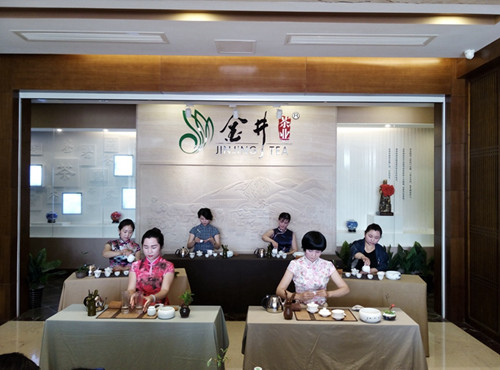 |
|
A demonstration of traditional tea techniques in the tea rich town of Jinjing. [Photo/jjz.csx.cn] |
For millions, tea has become a lifestyle choice and it therefore seems fitting that the historic and picturesque location of Jinjing should become as familiar to customers as its namesake beverage.
Zhou is certainly aware of the limitations of focusing solely on tea sales and envisions a future in which coming to Jinjing is a multidimensional experience.
"The tea industry is blossoming and has enormous potential. It can offer much more than simply producing and processing tea. The goal is to convert the Jinjing tea industry into a thriving tertiary industry."
The region lies on the historical tea-horse road and as a testament to this Jinjing opened a regional tea museum in 2015. Furthermore, the town is dotted with charming tea cafes and boasts several restaurants that offer a range of tea inspired culinary creations such as tea-smoked chicken, tea flavored eggs, and tea cookies.
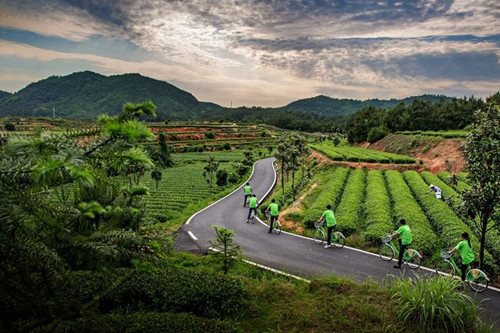 |
| Visitors cycle along the historic tea-horse road. [Photo/jjz.csx.cn] |
The center of Jinjing town is currently the antithesis of the tranquility one associates with tea drinking. Construction workers have invaded the town filling the air with the sound of drills and the smell of cement. The extensive building is part of Jinjing's self-stated desire to build China's most beautiful tea town, an ambitious goal undoubtedly, but one that if successful will make overcoming the previous economic hardships that little bit sweeter.
Changsha seeks to revive porcelain production
In recent years, the local government has sought to revive the region's long tradition in porcelain making and boost local industry with the cultural influence of ancient Tongguan kilns, which have a history of 1,200 years.
Contact Us
Tel: +86(0731)-8401-8486
Add: No.19, Kaiyuan Rd, Xingsha, Changsha county

